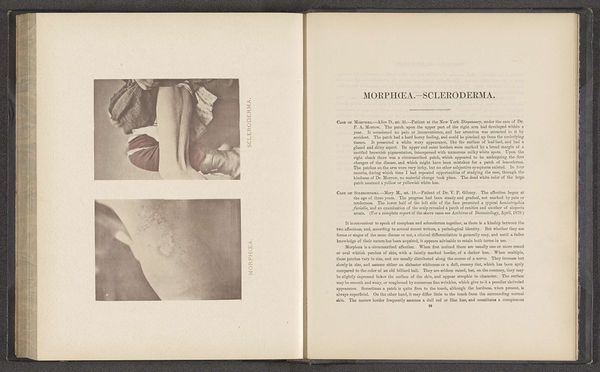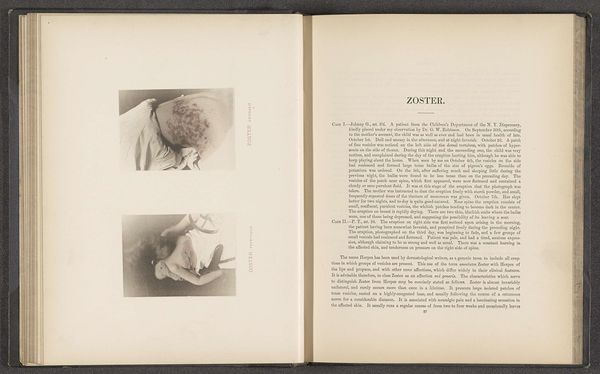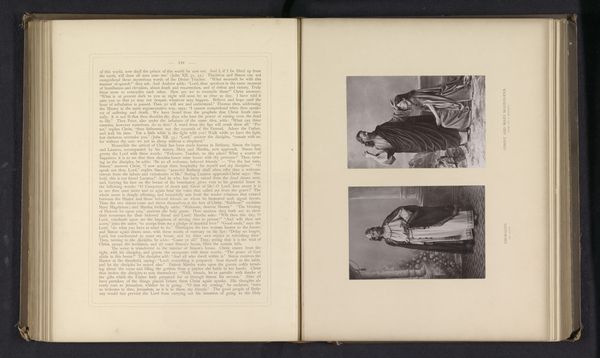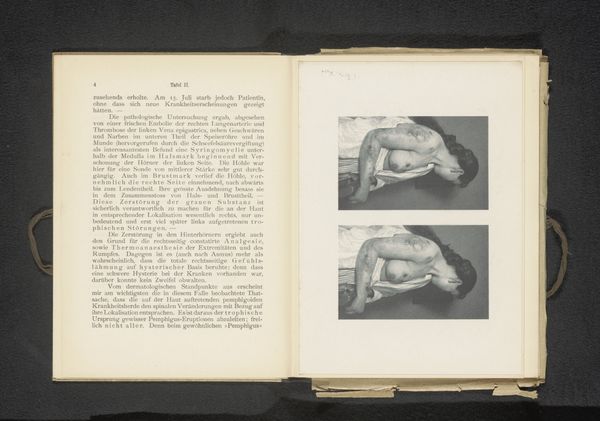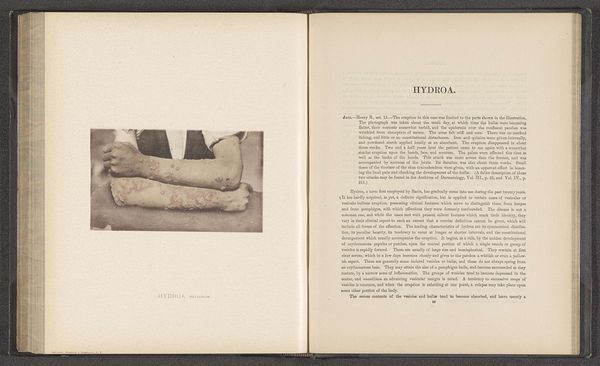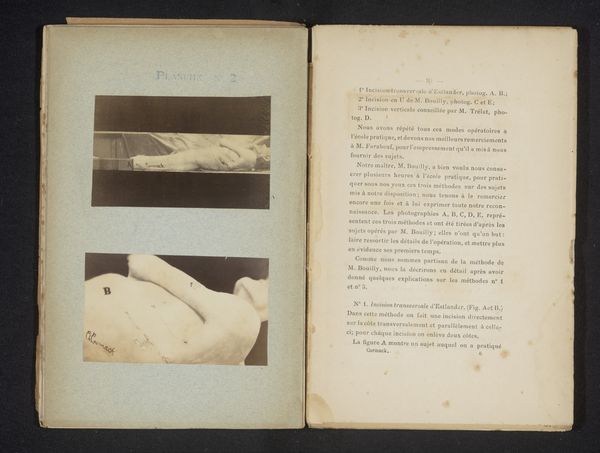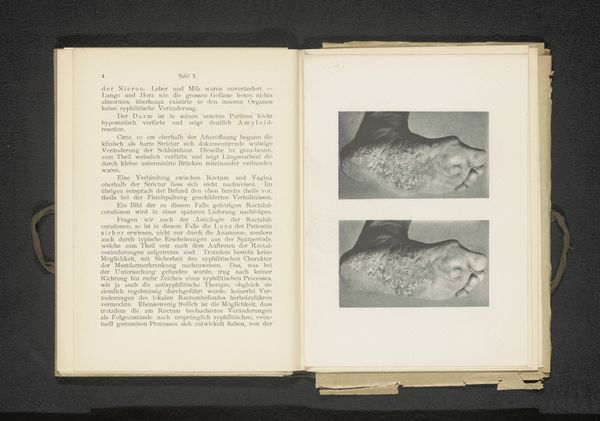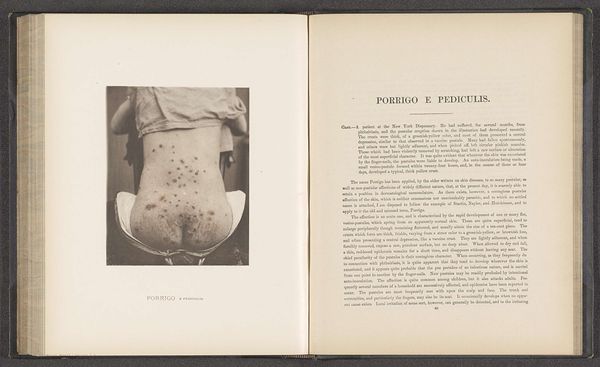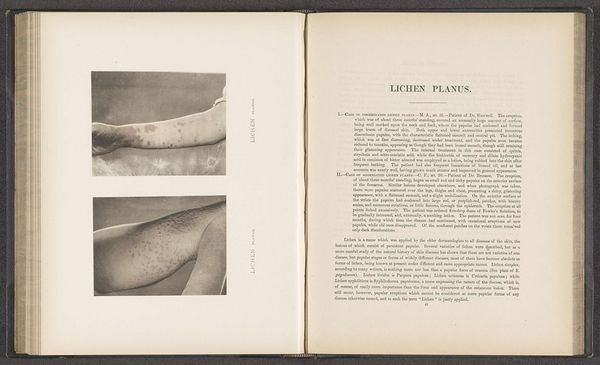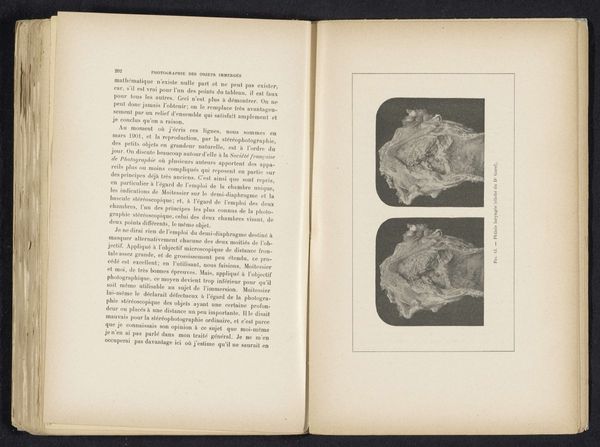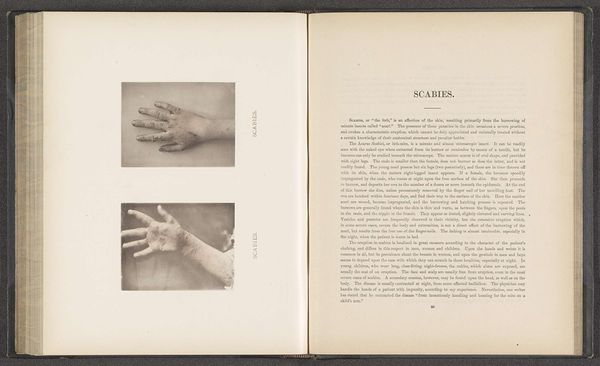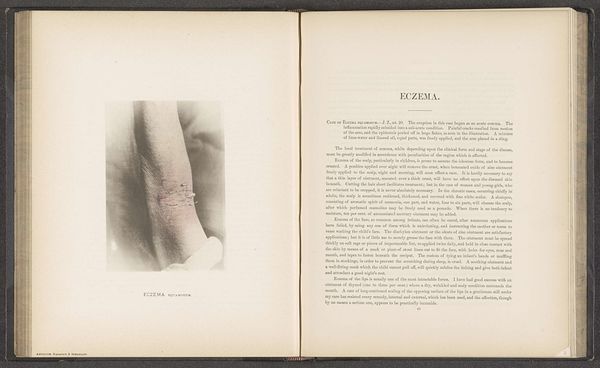
Patiënten lijdend aan de huidziekte 'eczema e venis varicosis' en 'ulcus varicosum' before 1881
0:00
0:00
photography, gelatin-silver-print
#
portrait
#
photography
#
gelatin-silver-print
#
academic-art
#
realism
Dimensions: height 106 mm, width 76 mm, height 105 mm, width 75 mm, height 294 mm, width 226 mm
Copyright: Rijks Museum: Open Domain
Editor: We’re looking at a fascinating, albeit unsettling, gelatin silver print from before 1881, titled "Patiënten lijdend aan de huidziekte 'eczema e venis varicosis' en 'ulcus varicosum'," created by an anonymous artist. It presents two photographic studies of lower legs, detailing skin conditions. The starkness of the image is immediately striking; what stands out to you? Curator: Formally, it is the contrast between the clinical detachment of the photographic method and the very visceral nature of the depicted conditions that captures my attention. Consider the composition: two rectangular frames, each carefully lit and arranged to maximize visibility of the affected areas. This is a study in texture – the smoothness of healthy skin versus the disruptions, lesions, and discolorations associated with disease. The meticulous framing suggests a desire for objective documentation, devoid of emotional affect. Do you notice the use of light and shadow? Editor: Yes, the lighting is quite deliberate, emphasizing the topography of the skin. It almost sculpts the imperfections, making them undeniably present. Is the composition purely functional, or can we glean anything more from it? Curator: While functionality is primary, we can observe how the arrangement itself becomes a visual language. The linear placement of the photographs creates a sense of comparison and analysis, almost like a scientific grid. Note the absence of a narrative context beyond the isolated limbs; our attention is forcefully directed to the formal elements of skin, texture, and the impact of light on form. Editor: So, it’s about pushing us to see the disease objectively, reducing it to its visual components. I initially saw only discomfort, but now appreciate how the photographer's choices shaped my viewing experience. Curator: Precisely. By stripping away extraneous detail and emphasizing the visual qualities, the work prompts us to consider the power of representation itself. Even a seemingly objective photograph is constructed, guiding our gaze and influencing our understanding. Editor: That's a compelling insight, highlighting the interplay of form and content, even in what seems like pure documentation.
Comments
No comments
Be the first to comment and join the conversation on the ultimate creative platform.
